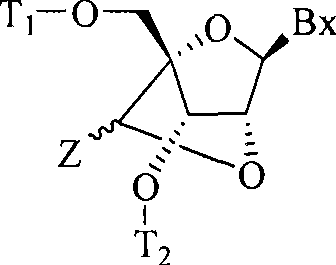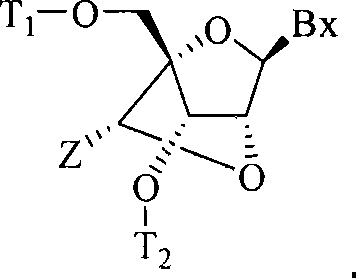Compounds and methods for modulating expression of gccr
An antisense compound and a representative technology, applied in the field of compounds and methods for regulating PCSK9 expression, can solve problems such as reduced sequence specificity
- Summary
- Abstract
- Description
- Claims
- Application Information
AI Technical Summary
Problems solved by technology
Method used
Image
Examples
Embodiment 1
[1173] Cell culture and short antisense compound treatment
[1174] The effect of short antisense compounds on target nucleic acid expression can be tested in any of a variety of cultured cell lines or primary cell lines. The cell lines can be obtained from publicly available sources, such as the American Type Culture Collection (Manassas, VA). The cells are cultured according to methods known to those of ordinary skill in the art.
[1175] When the cells reach the proper confluence, use The cells were treated with oligonucleotides as described. When the cells reach 65-75% confluence, they are treated with oligonucleotides. in Reduced serum medium (Invitrogen LifeTechnologies, Carlsbad, CA) combines oligonucleotides with (Invitrogen LifeTechnologies, Carlsbad, CA) mix to achieve the desired oligonucleotide concentration and 2.5 or 3μg / mL per 100nM oligonucleotide concentration. This transfection composition was incubated at room temperature for about 0.5 hours. For cells grown...
Embodiment 2
[1178] Example 2 Real-time quantitative PCR analysis of target mRNA levels
[1179] use The 7600, 7700 or 7900 Sequence Detection System (PE-Applied Biosystems, Foster City, CA) performs real-time quantitative PCR to quantify the target mRNA level according to the manufacturer's instructions.
[1180] Before the quantitative PCR analysis, the GAPDH amplification reaction was used to evaluate the ability to be "multiplexed" of the primer-probe set specific to the tested target gene. After separation, reverse transcriptase (RT) reaction and real-time PCR are performed on the RNA sequence, and the two reactions are performed in the same well. RT and PCR reagents were obtained from Invitrogen Life Technologies (Carlsbad, CA). RT, real-time PCR are carried out in the same well, 20μL PCR cocktail (without MgCl 2 2.5x PCR buffer, 6.6mM MgCl 2 , DATP, dCTP, dCTP and dGTP each 375μM, forward and reverse primers each 375nM, 125nM probe, 4 units of RNase inhibitor, 1.25 units of Taq, 5 uni...
Embodiment 3
[1188] Example 3: Targeting ApoB nucleic acid and having 2'-MOE or methylene group (4'-CH 2 -O-2’) BNA modified short antisense compound
[1189] 6-week-old male Balb / c mice (Jackson Laboratory, Bar Harbor, ME) were injected intraperitoneally (i.p.) with an antisense compound targeting ApoB twice a week for three weeks. Antisense compound dosages include 2.4, 1.2, 0.6, 0.3 and 0.15 μmol / kg. For antisense compounds of 14 nucleotides in length, these doses are equal to approximately 12, 6, 3, 1.5, or 0.75 mg / kg, respectively. Shown in Table 25 are the sequences and motifs of the antisense compounds used in this study. The antisense compound is 20 or 14 nucleotides in length, and has a central "gap" region composed of 10 2'-deoxynucleotides, on both sides of which there are 2'-O-methoxyethyl Base (2'-MOE) wings or BNA modified "wings". For example, the 2-10-2 MOE gapmer motif (gapmer motif) represents such an antisense compound, which has a gap of 10 nucleotides and two nucleotides w...
PUM
 Login to View More
Login to View More Abstract
Description
Claims
Application Information
 Login to View More
Login to View More - R&D
- Intellectual Property
- Life Sciences
- Materials
- Tech Scout
- Unparalleled Data Quality
- Higher Quality Content
- 60% Fewer Hallucinations
Browse by: Latest US Patents, China's latest patents, Technical Efficacy Thesaurus, Application Domain, Technology Topic, Popular Technical Reports.
© 2025 PatSnap. All rights reserved.Legal|Privacy policy|Modern Slavery Act Transparency Statement|Sitemap|About US| Contact US: help@patsnap.com



